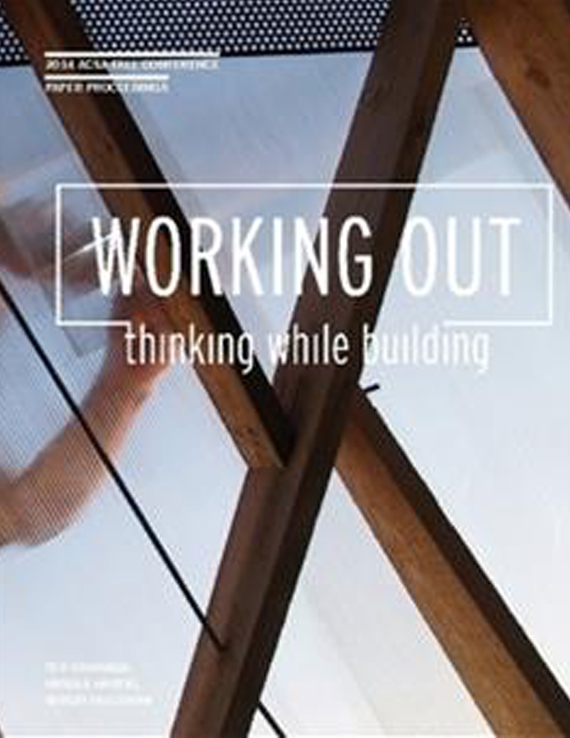Author(s): Matthew Hall
There are countless scenarios in which an architect must face unexpected problems. The designer acts as a collector; in constant process of an inventory of possibility, and within the given limits of culture, regulation, economy, client need and concept, they find ways to make do. When Claude Levi-Strauss makes a distinction between the definitive world/mind of the engineer, and the untamed “savage mind,” he could very well be describing the dilemma of the young designer, which struggles to balance the quantitative with the qualitative. A recent assignment in an undergraduate materials and methods course deals with these issues in the form of design-build exercises that are not aimed at completing a project in context, but at setting up the circumstances for unpredictability and problem solving. The objective is to engage students with the conflict between individual desire for aesthetics and composition, and simply getting the job done.“The bricoleur uses what is at hand because that is all that he has. His materials bear no relation to his task because they are themselves the result of previous constructions” Irénée Scalbert, Candide Journal for Architectural Knowledge No. 4, 07/2011 The Add/React exercise is a series of assignments setting up a scenario of “previous constructions” without revealing the next steps encouraging acts of bricolage. The task involves constructing an existing design from provided diagrams and basic performance specifications for a 1:1 installation that receives an addition each week. The specifications allow maneuver room (and demand) for variation and experimentation. Very little is given other than the basic dimensions and tolerances resulting in experimentation with the myriad ways to complete the task. Students are encouraged to do whatever is necessary to solve the problem within the parameters. This is not a project about concept, or even technique. It is a directed study in thinking on one’s feet and learning to react to unpredictable circumstances. It is also a vehicle to explore standardized materials, fasteners, common tools and connection methods as a design-build primer. Just as we design virtual buildings before the actual, we must also train students to practice with details before they are asked to construct useable prototypes in context.The design studio is a place of practice. Students engage in exercises involving potential programs and develop possible architecture all in the hopes that such training will benefit them when the time comes to apply their knowledge. While one could argue that the typical curriculum at an accredited architecture school covers too much, with an increase in the popularity and demand for design build related education it begs the question of whether design education’s purpose is to train students to design, to make, or some hybrid of the two. This project proposes a process of directed bricolage as a way to bridge the gap. While an architect and tradesman have their distinct roles, understanding the toil of the worker and the capability of tool and material are no doubt of considerable value to a young student.
Volume Editors
Sergio Palleroni, Ted Cavanagh & Ursula Hartig
ISBN
978-0-935502-94-7

 Study Architecture
Study Architecture  ProPEL
ProPEL 
